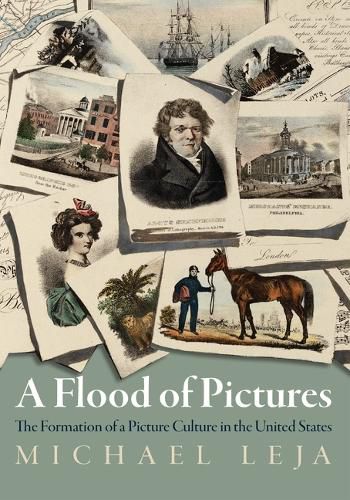Readings Newsletter
Become a Readings Member to make your shopping experience even easier.
Sign in or sign up for free!
You’re not far away from qualifying for FREE standard shipping within Australia
You’ve qualified for FREE standard shipping within Australia
The cart is loading…






Explores how the widespread circulation of pictures reshaped a nineteenth-century US culture that was accustomed to printed and spoken words
When and how did pictures start to permeate everyday lives in the United States? What happened to those daily lives when they did? And what happened to pictures in the process? In this full-color, heavily illustrated book, Michael Leja traces the beginnings of a transformation in cultural life in the United States: when the widespread circulation of pictures reshaped a culture accustomed to printed and spoken words.
In the three decades before the Civil War, the ordinary experiences of a large segment of the population came to include pictures of many kinds, including illustrations in books, pamphlets, and newspapers; photographs on cards; full-sheet printed pictures collected in scrapbooks or albums or hung on walls; posters and broadsheets; spectacular paintings displayed in theatrical venues; and more. Pictures supplemented verbal texts--and in some cases overshadowed them--for conveying news and information; portraying people, places, and events; focusing public discourse; selling things; educating and instructing; generating excitement and aesthetic gratification; promoting and disguising political agendas; shaping social identities; and building and undermining social bonds.
A Flood of Pictures recovers a time before successful pictorial formulas for mass appeal were established, before an audience habituated to consumption of pictures existed, and before pictures had become thoroughly commodified. Through its exploration of these nineteenth-century developments, the book reveals the foundations of our picture-saturated twenty-first century.
$9.00 standard shipping within Australia
FREE standard shipping within Australia for orders over $100.00
Express & International shipping calculated at checkout
Explores how the widespread circulation of pictures reshaped a nineteenth-century US culture that was accustomed to printed and spoken words
When and how did pictures start to permeate everyday lives in the United States? What happened to those daily lives when they did? And what happened to pictures in the process? In this full-color, heavily illustrated book, Michael Leja traces the beginnings of a transformation in cultural life in the United States: when the widespread circulation of pictures reshaped a culture accustomed to printed and spoken words.
In the three decades before the Civil War, the ordinary experiences of a large segment of the population came to include pictures of many kinds, including illustrations in books, pamphlets, and newspapers; photographs on cards; full-sheet printed pictures collected in scrapbooks or albums or hung on walls; posters and broadsheets; spectacular paintings displayed in theatrical venues; and more. Pictures supplemented verbal texts--and in some cases overshadowed them--for conveying news and information; portraying people, places, and events; focusing public discourse; selling things; educating and instructing; generating excitement and aesthetic gratification; promoting and disguising political agendas; shaping social identities; and building and undermining social bonds.
A Flood of Pictures recovers a time before successful pictorial formulas for mass appeal were established, before an audience habituated to consumption of pictures existed, and before pictures had become thoroughly commodified. Through its exploration of these nineteenth-century developments, the book reveals the foundations of our picture-saturated twenty-first century.